The first text message arrived while I was in the hospital.
I didn’t see it immediately because my phone’s battery had died but instead saw it while I was on my way to a gluten-free bakery in the East Village because I had only been able to eat a cup of peaches and a banana while in the hospital. The text was looking for “Maureen” and I kept staring at it, a bag of baked goods in one hand, phone in the other as the rain fell on me while I listened to “Europe Endless” by Kraftwerk.
“I’m sorry, but you have the wrong number,” I responded.
Having switched numbers before, I assumed Maureen was the person who had the number prior to me. I’ve run into situations where I’ve gone to sign up for rewards programs at stores, only to be told, “Oh, we have you in our system already. Linda?” I didn’t think much of it as I headed home, ready to finally eat, take a nap, and watch one of my favorite movies.
The messages for Maureen continued to come in for the next few days. As I sat in bed trying to build a Twitter bot, many of the texts were just “Hey Maureen,” followed by a photo of an erect penis. I blocked those numbers, but for the ones looking for “Maureen” and trying to set up a time for a date, I told them they had the wrong number. The first message where I was told where these people were getting my number was from a guy wanting to go on a bike ride who used “OKC” in the message, which led to me thinking it was from a guy from Oklahoma City I met at a meetup. By Friday, I had learned from a guy who would call me a “lying bitch” these men had found my number from a profile they had matched with on OKCupid. I reached out to OKCupid, told them what was going on, asked them to deactivate the profile, and spent the next few days apologizing to every guy who texted me.
In the middle of being incredibly sick, I was dealing with what seemed like more mysterious harassment. I had been dealing with tweets, direct messages, and emails from people who were fans of a comedian and podcast host–a redundant title when talking about a comedian in New York City–since late October, when I was so tired of the barrage of tweets and emails that I broke down crying in the self-service area of the Red Hook IKEA. The messages and tweets had become more sporadic, but as I got these text messages, my mind kept thinking these were connected, even though the fans seemed to be centered in New York while all of the guys who were texting me were from Los Angeles.
A guy texted me from a bar on an evening on a weekend, wondering where “Maureen” was. I explained what I knew and apologized profusely to him, but he was more intrigued than anything. J., as I’ll call him, explained to me he got a free drink and went to a bar near where he lived, which made it feel like less of a loss for him. When he got home–he is to date one of four guys who did not call me a “lying bitch,” a cunt, send me a dick pic, or a sexually explicit message–he sent me a screenshot of the profile for “Maureen” and the text of the conversation he had with the person behind the profile.
“Maureen” featured a picture of me from 2015 where I’m coyly smiling during critiques for DrekFest, a festival of intentionally bad plays in Chicago. Knowing this was a photo that had been my Facebook profile picture, I initiated the process of deleting my Facebook account, hoping it would stop this problem. I kept staring at the screenshot, noticing the details the person behind the account and created. “Maureen” was older than me and a couple inches taller. I would learn from talking with J. that “Maureen” claimed to have three college degrees, was Jewish, a smoker, and fluent in Hebrew. “Maureen” was in the messages to J. very vague, not willing to talk about things of substance, as opposed to me where I will talk about things of substance, I’m just incredibly prickly, stubborn, and cold on dating apps.
Two days after this discovery regarding “Maureen,” I received a text message for a guy looking for “Jenny,” a librarian. I told him he had the wrong number and rolled my eyes as I prepared to hide out in the woods of New Hampshire. I then received a message on Twitter from someone who follows me, letting me know he had matched with “Jenny” and it seemed to be someone who was harassing me. I thanked him, largely because it meant I was able to mentally prepare myself for what would likely be an onslaught of sexually explicit messages from random guys in the greater Los Angeles area. I emailed OKCupid again, letting them know the latest update to the bizarre saga, and headed off to New Hampshire.
As I drove north, I kept receiving text messages from guys looking for “Jenny,” wondering why she never showed up at their apartments, if she was still interested in smoking weed, if she could send them photos of her pierced nipples, if she wanted to get Korean barbeque tacos that night. The pierced nipples brought me back to the tweets I had received in October from fans of the comedian who kept suggesting I have pierced nipples, but I thought it was probably a coincidence and wanted to focus on enjoying being away from the city and this craziness.
When I returned to an area of New Hampshire with more reliable cell service, I had dozens of text messages from guys looking for “Jenny,” as well as one guy who had tried five times to FaceTime with me. I tried to get information from the guys to figure out who was behind the OKCupid profiles, but I usually reverted to my usual prickly, stubborn, cold public persona when someone would suggest I had daddy issues because I wasn’t ready to bone at a moment’s notice.
Eventually, a guy sent me info about “Jenny.” I did a reverse image search and discovered the sole photo of “Jenny” was from a post on The Chive of girls who were definitely a bad idea of things to do this weekend because women are “things” to Chive readers. I emailed OKCupid again with this info, this time also frustrated by the presence of ads for the website that promised all over the subway that “dating deserves better.”
As I waited for a response from the site, I did more digging and found out that “Jenny” claimed to be a librarian for the Los Angeles Public Library who lived in Boyle Heights. If there is any good to come from being harassed for several months, it’s that claims made about you by random people on the internet. The people who initially harassed me in October, leading to me crying at IKEA because having to put back multiple boxes for a wardrobe was a bridge too far, had insisted I was a filthy slutty librarian from Los Angeles who had worked for the LAPL and had moved to New York City to stalk their favorite podcast host.
As OKCupid banned the IP addresses associated with the profile, I kept digging and found out my name had been shared to the subreddit for the podcast hosted by the comedian, as well as with an incredibly ludicrous story that even I don’t believe, although it involves a lot of conveniently deleted posts. I talked this through with my therapist and psychiatrist, both of whom were much more concerned about this than me. (“No one has threatened to kill me since October,” I told my therapist. “And even then, that was, ‘Kill yourself, you fat Jewish slut,’ which is much less threatening than what I’m used to.”) I gave myself permission to be angry about this and then went back to living my life normally by visiting family, going camping, practicing aerial acrobatics, reading books, and spending a gratuitous amount of time in The Bronx for someone who lives in Brooklyn.
I have not changed my number, but I have accepted I will probably never use another dating app or website again. Even though I was affected by this as the person whose phone number was distributed through a dating website, there’s this huge question in the back of my head as to if I can ever trust people I’m not meeting face-to-face. This decision is made easier by dating in New York being a hellscape filled with creeps, finance bros, and stand-up comedians who think they’re entitled to sex. The few men who don’t fall into these categories always tell me to be nicer, to smile more, to lose weight, to wear contacts instead of glasses, or to stop dressing in layers. But there is the thought that someday I might move and eventually I’d like to settle down, have a husband, maybe kids. I am in a place where I have learned to love myself, from my frizzy dark brown hair to my feet that have pronounced tan lines in the summer, embracing my laugh that is so loud, I’ve been asked to stop laughing at Upright Citizens Brigade shows.
But much like the men who went to bars and coffee shops waiting for “Maureen” or “Jenny,” I have spent too much time at bars in Manhattan and at incredibly trendy performance venues in Gowanus, waiting for men to show up after they charmed me online. How many of these guys I matched with on Tinder, Coffee Meets Bagel, or Bumble were like the profiles men in Los Angeles matched with, malleable to be whatever the guys were interested in? How many of these guys were just someone with a phone or a computer who was really bored?
I still talk with J., who keeps encouraging me to come out to Los Angeles so we can hang out, to which I always reply, “Southern California is my home and I’m long overdue for a visit!” With two other guys who weren’t creeps to me, I’ve found myself wondering because I didn’t see the full transcript of the conversations or all of the profile for “Maureen” and “Jenny” what they were led to believe.
How old do you think I am?
What interests do you think I have?
Do you think I’m incredibly well-educated?
Do you think I’m a practicing Jew?
What were you told I enjoy doing in the bedroom?
What version of “me” do you prefer?

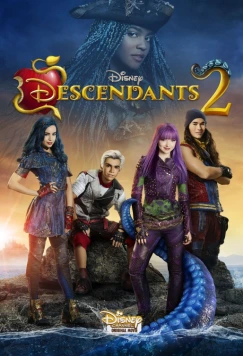 Everything is awful in this world, so it seemed like a good idea to indulge in what is my pop culture guilty pleasure.
Everything is awful in this world, so it seemed like a good idea to indulge in what is my pop culture guilty pleasure.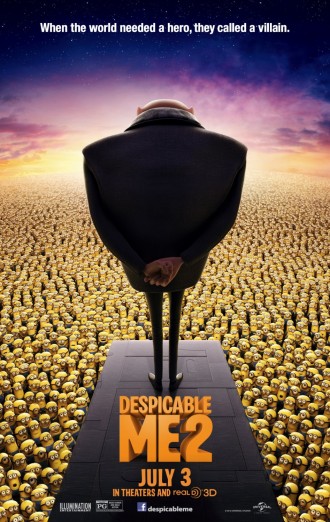 I kept thinking during “The Book of Henry” about how the film seemed to not understand how people work. More importantly, it felt like it didn’t know how children behave, particularly at different ages. The movie used the broad brush of having all of the children either precocious or cute in an age inappropriate way.
I kept thinking during “The Book of Henry” about how the film seemed to not understand how people work. More importantly, it felt like it didn’t know how children behave, particularly at different ages. The movie used the broad brush of having all of the children either precocious or cute in an age inappropriate way.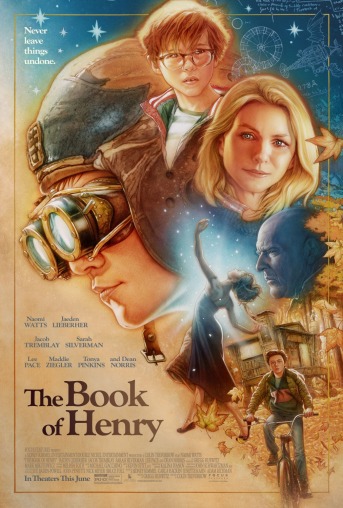 It’s rare that movies in this series result in me actually saying, “I can’t believe I just watched that.” “Divergent” certainly made me say that, as did the end credits of “Catch Hell.” But as I was walking to my car after seeing “The Book of Henry,” I actually said, “I can’t believe I just watched that.”
It’s rare that movies in this series result in me actually saying, “I can’t believe I just watched that.” “Divergent” certainly made me say that, as did the end credits of “Catch Hell.” But as I was walking to my car after seeing “The Book of Henry,” I actually said, “I can’t believe I just watched that.”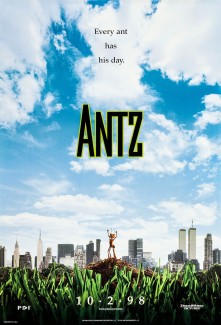 Dreamworks must be one of the most successful companies to be the result of a feud.
Dreamworks must be one of the most successful companies to be the result of a feud.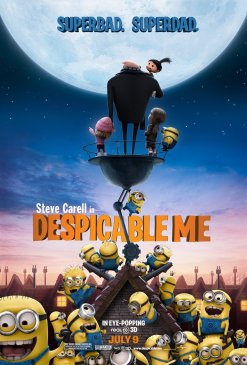 Despite having a very clear affection for most animated movies, I failed to see “Despicable Me” until recently. I actually don’t remember it being released in 2010, possibly because I was busy working on moving back to Chicago and trying to emotionally recover from “Toy Story 3.”
Despite having a very clear affection for most animated movies, I failed to see “Despicable Me” until recently. I actually don’t remember it being released in 2010, possibly because I was busy working on moving back to Chicago and trying to emotionally recover from “Toy Story 3.”